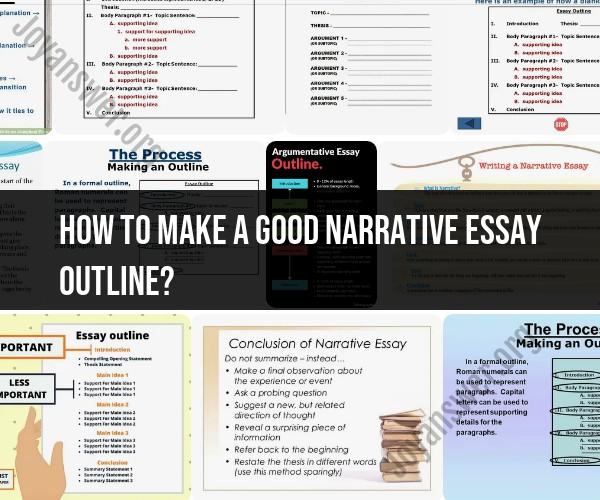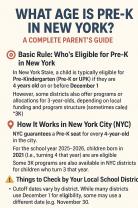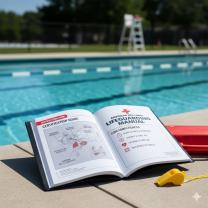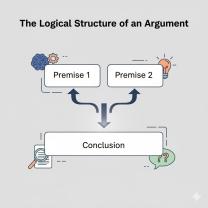How to make a good narrative essay Outline?
Creating an effective outline is a crucial step in crafting a compelling narrative essay. An outline helps you organize your thoughts, structure your story, and ensure that your narrative flows cohesively. Here's a step-by-step guide on how to create a good narrative essay outline:
1. Choose a Topic:
- Select a specific event, experience, or moment that you want to share in your narrative essay. It should be a meaningful or significant story that has personal relevance or offers a valuable lesson.
2. Identify the Purpose:
- Determine the purpose of your narrative. Is it to entertain, inform, persuade, or reflect? Your purpose will influence how you tell the story.
3. Start with a Hook:
- Begin your outline with an attention-grabbing hook that draws readers into your narrative. This can be a captivating anecdote, a thought-provoking question, or a powerful quote.
4. Introduction:
- Introduce the main characters or elements of your narrative.
- Provide context to set the stage for your story.
- Clearly state the central theme or message you intend to convey.
5. Body Paragraphs:
- Divide the body of your narrative into paragraphs, each focusing on a specific part of the story or a key event.
- For each paragraph, outline the following:
- Event or detail: Describe what happened or what is being discussed.
- Setting: Provide information about where and when the events took place.
- Character development: Share insights into the characters' thoughts, feelings, and actions.
- Conflict or challenge: Highlight any obstacles or conflicts that drive the narrative forward.
- Resolution or outcome: Explain how the conflict was resolved or the outcome of each event.
- Arrange the paragraphs in chronological order or another logical sequence.
6. Transitions:
- Use transitional phrases or sentences to link your paragraphs and ensure a smooth flow from one part of the story to the next.
7. Climax and Turning Points:
- Identify the climax or turning points in your narrative. These are the most pivotal moments in the story that often lead to personal growth or realization.
8. Conclusion:
- Summarize the main message or lesson learned from the narrative.
- Reflect on the significance of the story and its impact on you or others.
- End with a closing statement or reflection that leaves a lasting impression on the reader.
9. Check for Consistency:
- Ensure that your narrative maintains a consistent point of view (first-person, third-person, etc.) throughout the story.
10. Revise and Edit:
- Review your outline for clarity, coherence, and conciseness.
- Make any necessary revisions to improve the structure and flow of your narrative.
11. Add Descriptive Details:
- Incorporate vivid descriptions, sensory details, and figurative language to make your narrative come to life.
12. Proofread:
- Carefully proofread your outline for grammar, spelling, and punctuation errors.
13. Finalize the Outline:
- Once you are satisfied with your outline, you can use it as a guide to write your narrative essay.
Remember that the purpose of a narrative essay is to engage readers emotionally and intellectually. Your outline should support this goal by helping you tell a compelling, coherent, and meaningful story.
How to create a well-structured outline for a narrative essay?
To create a well-structured outline for a narrative essay, you need to first identify the main points of your story. Once you have identified your main points, you can start to organize them in a logical order.
A good narrative essay outline will typically include the following components:
- Introduction: The introduction should introduce your story and state your thesis statement.
- Body paragraphs: Each body paragraph should focus on one main point of your story. You should use evidence from your story to support your main points.
- Conclusion: The conclusion should wrap up your story and restate your thesis statement.
- Key components of a narrative essay outline, and how to organize them?
The key components of a narrative essay outline are:
- Introduction: The introduction should introduce your story and state your thesis statement.
The thesis statement is the main argument that you are trying to make in your essay. It should be a clear and concise statement that can be supported by the evidence in your essay.
- Body paragraphs: Each body paragraph should focus on one main point of your story. You should use evidence from your story to support your main points.
The body paragraphs are where you will develop your story and provide evidence to support your thesis statement. You should use vivid language and sensory details to bring your story to life.
- Conclusion: The conclusion should wrap up your story and restate your thesis statement.
The conclusion should leave the reader with something to think about. You can do this by restating your thesis statement in a new way or by asking a question that the reader can ponder.
How to craft a compelling introduction and thesis statement for your narrative essay?
A compelling introduction will grab the reader's attention and make them want to read more. You can do this by starting with a strong opening sentence or by telling a brief anecdote.
Your thesis statement should be a clear and concise statement that can be supported by the evidence in your essay. It should be the main argument that you are trying to make.
- Effective techniques for developing the body paragraphs of a narrative essay?
Here are some effective techniques for developing the body paragraphs of a narrative essay:
- Use vivid language and sensory details to bring your story to life.
- Use evidence from your story to support your main points.
- Be specific and avoid generalizations.
- Show, don't tell. This means using action verbs and dialogue to bring your story to life.
- Use transitions to help the reader follow your story.
How to wrap up your narrative essay with a strong conclusion that leaves an impact on the reader?
A strong conclusion will leave the reader with something to think about. You can do this by restating your thesis statement in a new way or by asking a question that the reader can ponder.
You can also use the conclusion to reflect on your story and what it means to you.
Here are some tips for writing a strong conclusion:
- Restate your thesis statement in a new way.
- Ask a question that the reader can ponder.
- Reflect on your story and what it means to you.
- Use a strong closing sentence that leaves the reader with a lasting impression.
Overall, by following these tips, you can write a well-structured narrative essay that will leave an impact on your readers.













